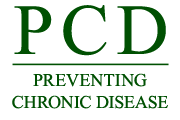PCD News Summary for April 20, 2017

Notice to News Media – PCD Release Time and Embargo Policy:
CDC’s News Media Branch releases to reporters the PCD media packet every Tuesday afternoon between 12 and 2 pm.
Embargoed until Thursday, April 20, at 12:00 PM ET
Racial and Ethnic Subgroup Disparities in Hypertension Prevalence, New York City Health and Nutrition Examination Survey, 2013–2014
Survey findings show that a third of adults in New York City have high blood pressure – with specific subgroups at particular risk – suggesting the need for targeted prevention, screening, and disease management. Findings from the 2013-2014 New York City Health and Nutrition Examination Survey show that 1 in 3 New York City adults had hypertension. Hypertension prevalence varied by race and ethnicity, with 44 percent of non-Hispanic blacks, 38 percent of Asians, 33 percent of Hispanics, and 28 percent of non-Hispanic whites having hypertension. Even when accounting for differences in age, sex, education, and obesity, black and Asian adults were twice as likely to have hypertension compared to white adults. Two subgroups were at particular risk of hypertension: East/Southeast Asian adults (three times higher risk than non-Hispanic whites) and Dominican adults (twice the risk of non-Hispanic whites).
Melissa Newton
mnewton@cdc.gov
404-718-6281
Do No Harm: Moving Beyond Weight Loss To Emphasize Physical Activity at Every Size
Providers may reduce the stigma obese patients often encounter in health care settings and improve outcomes by moving away from a focus on weighing patients and counseling about weight loss and toward emphasizing healthy behaviors. The stigma associated with a health care provider’s assessment of body weight can be associated with medication nonadherence, mistrust of the provider, and avoidance of medical care. Although a weight or BMI measurement is sometimes necessary for medical reasons, discussions about these numbers could be harmful. Researchers suggest that providers engage in conversations that emphasize health behaviors, such as increasing or maintaining physical activity, rather than weight. Patient-centered counseling that emphasizes behavior over body size can minimize the risk of stigma and help patients achieve health goals in a collaborative, supportive environment.
Melissa Newton
mnewton@cdc.gov
404-718-6281
###
Note: Not all articles published in PCD represent work done at CDC. In your stories, please clarify whether a study was conducted by CDC (“a CDC study”) or by another institution (“a study published by CDC”). The opinions expressed by authors contributing to PCD do not necessarily reflect the opinions of CDC or the institutions with which the authors are affiliated. PCD requests that, when possible, you include a live link to the article in your stories.
###
U.S. DEPARTMENT OF HEALTH AND HUMAN SERVICES
CDC works 24/7 protecting America’s health, safety and security. Whether diseases start at home or abroad, are curable or preventable, chronic or acute, stem from human error or deliberate attack, CDC is committed to respond to America’s most pressing health challenges.
- Page last reviewed: April 20, 2017
- Page last updated: April 20, 2017
- Content source:



 ShareCompartir
ShareCompartir